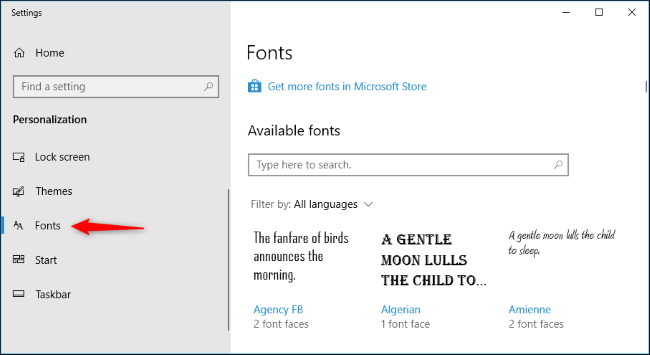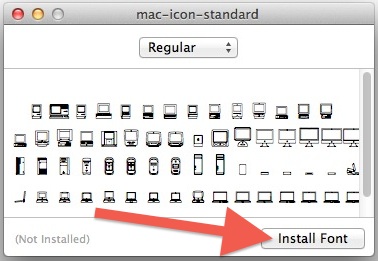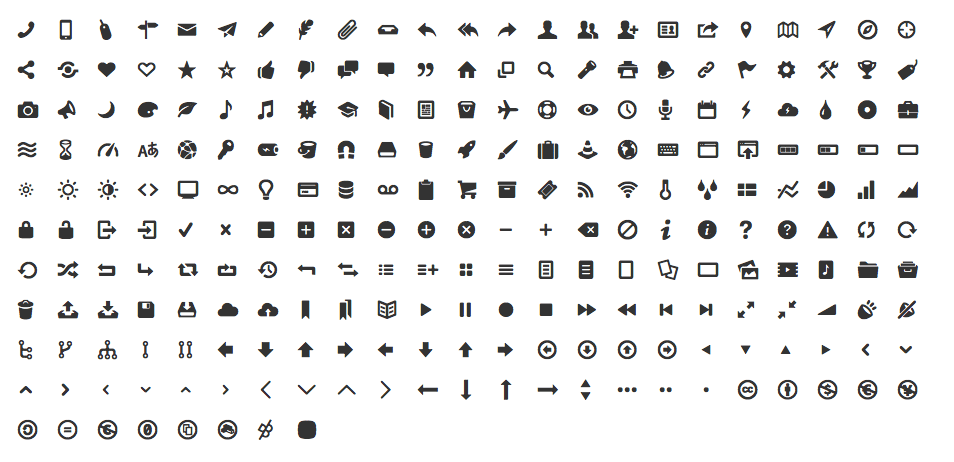-
Ttf Font For Mac카테고리 없음 2020. 11. 4. 12:32
Installing TTF TrueType or OTF OpenType fonts on the Mac: Drag or copy and paste the TTF or OTF font files to the Library/Fonts folder. To activate the fonts, restart the application – some applications may require a computer restart. The fonts should now be active in the font menu of the application. To create the correct output for the font. While earlier versions of the Mac OS required additional software to work with Type 1 fonts (as well as at least one bitmap copy of each Type 1 font to be used), macOS now includes native support for a variety of font technologies, including both TrueType and PostScript Type 1. TrueType fonts are supported directly on Mac OS X, as well as just about any other font type. If you double click on the font, it should open in Font Book, and you can just choose 'Install Font'. I do recommend Validating the font first, since Windows fonts do not always include everything necessary to fully use the font, but there is no reason.
After purchasing your fonts you’ll be presented with several font formats you can download. Read on to learn more about the formats, and more importantly, when to use each.
Desktop Fonts
If you’ve downloaded a desktop license, most fonts allow you to download both the OTF and TTF files. You should install only one format at a time. Installing and using both simultaneously could cause unexpected collisions.
This begs the question, “If I should only install one format, should I download the TTF or OTF files?”

Try OTFs First
50841 free fonts in 25122 families. Download free fonts for Windows and Mac. The home of free fonts since 1998.
In most cases we recommend that you download the OTF files. By default, clicking the download button will download these.
In the rare case that the foundry hasn’t provided us with OTF files, clicking the download button will instead download the TTF files. If the OTF files are unavailable there won’t be a dropdown arrow next to the download button.
If you need OTF files, ask our support team for OTF files and we’ll try to acquire these for you.
Check out our support articles for installing fonts on Windows and installing fonts on Mac.
Advantages of OTF Files
- OTF files may contain additional alternative characters and typesetting features, including contextual alternatives, that can be used in supporting applications. Read more about Opentype features in our article OpenType 101 and blog post Typographic Feng Shui And OpenType.
- OTF files tend to be significantly smaller than their TTF counterparts.
When Should I Use TTFs?
While most programs support OTFs, some software (especially older programs) only support TTFs or exhibit strange behavior when using OTFs. If you’re experiencing issues with an OTF font, we recommend that you completely uninstall the OTFs and try the TTF fonts instead. To download the TTF files, click the dropdown arrow next to the download button and select the option labeled “Download TTFs”.
We recommend that you restart your computer after installing the new fonts since some software won’t refresh their font cache. If you’re still experiencing issues, contact our support team.
Ttf Font Editor Mac
In many cases you can still access the alternative characters and typesetting features available in the OTF fonts, however you have to search through their table of glyphs and copy the specific characters instead of using the more user-friendly OpenType controls.
What’s the technical difference between OTF and TTFs?
OTFs
OTF stands for Open Type Format, a format for vector fonts developed by Microsoft and Adobe Systems in the mid-1990s. The format was based on the TTF format and intended to succeed it. Open Type Fonts (OTFs) can contain approximately 65,500 glyphs, supports the Unicode character encoding, and is supported cross-platform.
The glyph outline data within an OTF font can either be in the Compact Font Format (CFF) or TrueType format.
- The CFF Format is based on the PostScript language. People sometimes refer to this format as OpenType PostScript or OT/CFF. This format uses cubic Bézier curves to describe the glyph outlines. As the name “Compact File Format” implies, these files are much smaller than files that use the TrueType format.
- The TrueType format, sometimes referred to as OpenType (TrueType Flavor), uses the same method of describing glyph outlines as TTF fonts. This format describes the glyph outlines using quadratic Bézier curves.
The CFF format is far more popular. While foundries who sell through Fontspring are free to use either format, most OTF fonts have been produced in the CFF flavor.
TTFs
TTF stands for True Type Format and was created by Apple in the late 1980s. It describes the glyph outlines using quadratic Bézier curves. This requires more points than cubic Bézier curves to describe the same line, but is simpler and faster for the computer to process.
TTF fonts also allows type designers a high-level of control over how the rasterizer converts the mathematically-defined glyph paths into pixels. This allows for crisp fonts at small point sizes when displayed on low resolution displays. However these days smarter rasterizers and higher-density displays have minimized the benefit of manual hinting. Most platforms today ignore much of the hinting information provided.
TrueType-Flavored OpenType Files (OpenType TT) may use the TTF extension instead of the OTF extension to distinguish them from PostScript Flavored OpenType Files. OpenType TT files (regardless of whether they use the TTF or OTF file extension) are backwards-compatible with programs that support Windows TrueType fonts.
Web Fonts
Our basic webfont kit comes with the WOFF and WOFF2 file formats which have wide support across all modern browsers. View the browser support for WOFF and WOFF2. @font-face allows multiple fallback files to be listed, so if a browser doesn’t support WOFF2 it will download WOFF instead.
If you need to support legacy browsers, we also provide EOT, TTF, and SVG web fonts for download. Play app store free download.
Read more about our web font download options.
Install fonts
Otf Or Ttf Font For Mac
Double-click the font in the Finder, then click Install Font in the font preview window that opens. After your Mac validates the font and opens the Font Book app, the font is installed and available for use.

You can use Font Book preferences to set the default install location, which determines whether the fonts you add are available to other user accounts on your Mac.
Fonts that appear dimmed in Font Book are either disabled ('Off'), or are additional fonts available for download from Apple. To download the font, select it and choose Edit > Download.
Disable fonts
You can disable any font that isn't required by your Mac. Select the font in Font Book, then choose Edit > Disable. The font remains installed, but no longer appears in the font menus of your apps. Fonts that are disabled show ”Off” next to the font name in Font Book.
Remove fonts
You can remove any font that isn't required by your Mac. Select the font in Font Book, then choose File > Remove. Font Book moves the font to the Trash.

Learn more
macOS supports TrueType (.ttf), Variable TrueType (.ttf), TrueType Collection (.ttc), OpenType (.otf), and OpenType Collection (.ttc) fonts. macOS Mojave adds support for OpenType-SVG fonts.
Font Book For Mac
Legacy suitcase TrueType fonts and PostScript Type 1 LWFN fonts might work but aren't recommended.
